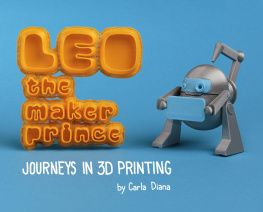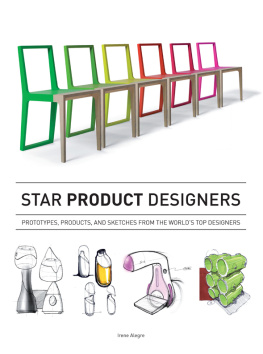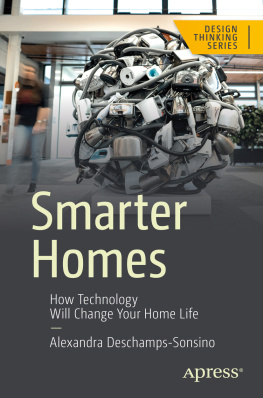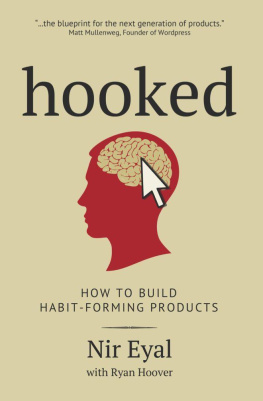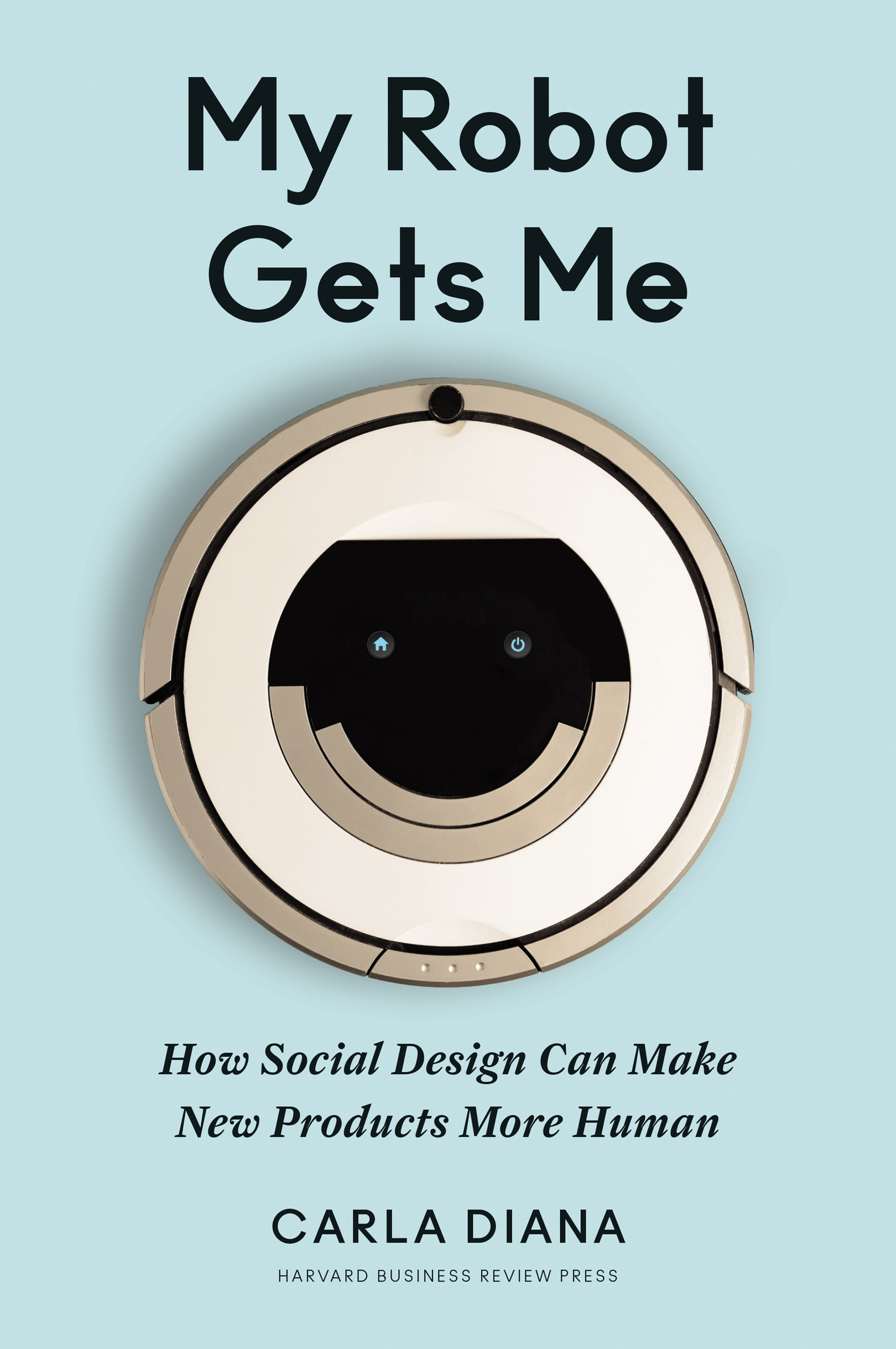HBR Press Quantity Sales Discounts
Harvard Business Review Press titles are available at significant quantity discounts when purchased in bulk for client gifts, sales promotions, and premiums. Special editions, including books with corporate logos, customized covers, and letters from the company or CEO printed in the front matter, as well as excerpts of existing books, can also be created in large quantities for special needs.
For details and discount information for both print and ebook formats, contact .
Copyright 2021 Carla Diana
All rights reserved
No part of this publication may be reproduced, stored in or introduced into a retrieval system, or transmitted, in any form, or by any means (electronic, mechanical, photocopying, recording, or otherwise), without the prior permission of the publisher. Requests for permission should be directed to or mailed to Permissions, Harvard Business School Publishing, 60 Harvard Way, Boston, MA 02163.
The web addresses referenced in this book were live and correct at the time of the books publication but may be subject to change.
Library of Congress Cataloging-in-Publication Data
Names: Diana, Carla, author.
Title: My robot gets me : how social design can make new products more human / Carla Diana.
Description: Boston, MA : Harvard Business Review Press, [2021] | Includes index. |
Identifiers: LCCN 2020047850 (print) | LCCN 2020047851 (ebook) | ISBN 9781633694422 (hardcover) | ISBN 9781633694439 (ebook)
Subjects: LCSH: Home automation. | Product designSocial aspects. | Artificial intelligence. | Human behavior. | Design and technology.
Classification: LCC TK7881.25 .D53 2021 (print) | LCC TK7881.25 (ebook) | DDC 658.5/752dc23
LC record available at https://lccn.loc.gov/2020047850
LC ebook record available at https://lccn.loc.gov/2020047851
ISBN: 978-1-63369-442-2
eISBN: 978-1-63369-443-9
The paper used in this publication meets the requirements of the American National Standard for Permanence of Paper for Publications and Documents in Libraries and Archives Z39.48-1992.
For my darling boy Massimo.
You get me, always.
CONTENTS
Introduction
Smart Is Not EnoughProducts Need to Be Social
Youre not crazy to thank Alexa when she checks the weather. Its not nuts to name your car Keith (or Fred or Celeste). And its perfectly normal to want to repair your Roomba out of loyalty rather than replace it when it breaks.

FIGURE 1-1
The Roomba Robot Vacuum
An often-cited Georgia Tech study of people first using the Roomba Robot Vacuuma device that looks like a twelve-inch round puck, with no deliberate features to make it seem like it has a face, body, or limbsrevealed that people saw it as a social entity, giving it names and talking to it directly.
Stephanie, I can walk barefoot!!! Clean floors!, August 16, 2018. Roomba 675: Our family immediately named her Hazel, and after several hours of hard work, I have no qualms about keeping her on my payroll. ;-)
After Hazel ventured under the china cabinet (who knows when that area last saw my broom), my son said, Hey! The fuzzies are gone!! Shes good!
Amya , Time Saver/Allergen Reducer, December 2, 2018. I love this little guy. We named him Wall-E because how could you not?
The first few times he runs it will seem like a struggle (at least to me it did). But after about the third or fourth time, he seemed to be able to make his way around the apartment with ease. He has gotten stuck a few times but has managed to wiggle free on his own.
Stephen and Susan, Better than my husband, April 14, 2020. Its definitely more reliable than my husband. It also does what I want better than my husband. I turn it on and leave the house and when I come back it at least did what I wanted it to. No excuses.
These examples are recent, but people have interacted socially with products long before there were computers, LEDs, or microchips. We have embraced special pillows, caressed key holders, and praised our washing machines. The social connection between person and product is only amplified when we add smartness, or the ability of a product to sense what were doing and respond appropriately. Behaviors like these are informed by the social norms, psychological responses, and interaction patterns that we have with other people, even if the things were interacting with are not people and we know it. Moreover, these tendencies grow stronger rather than weaker the more people interact, and great design plays a big role in the success of the interaction. The better the social exchange, the deeper the relationship a person has with a product and the better the experience overall. As technology becomes more sophisticated and microprocessors shrink to become embedded in everything from tennis rackets to syringes, we can program their behaviors as though they were little robotic entities.
As humans we are driven to be social. We have evolved to benefit from, value, and enjoy living together in groups, and we instinctively seek out interactions with people around us, something the 2020 pandemic has made us acutely aware of. The social scientist Michael Argyle argued that people are social animals for evolutionary reasonsthat is, community structures help ensure the food and shelter we need to survive. We talk about a broken product as being sick or on strike. People will often call into customer service desks complaining that their devices dont like them or are acting up.
Objects cant serve as substitutes for that human closeness we all crave; however, our deep need for social interaction makes us prone to interpreting interactions with products as social whether we are aware of it or not. Even devices that appear to behave in only vaguely communicative ways evoke sociality-based reactions.
Product Psychosis: Why Smart Products Arent So Smart
As the consumer products we own start to sense things in our environment, move about our living and working spaces, and perform tasks on our behalf, the importance of the social interactions we have with devices will only grow. Some people think the instinct to interact socially with products is something to fight against, or a sentimental weakness to overcome. To designers like myself who are immersed in the practice of creating meaningful interactions, this is like trying to fight peoples preferences for a variety of colors or their need to have written materials laid out in a manner that is easy to readthe best products come from working with peoples preferences, tendencies, and limitations. Our designs can work in harmony with natural tendencies, and to work well, social qualities should be designed on purpose, rather than left to happen by accident. This book makes explicit something that successful interaction designerswho are also essentially social designersdo as an inherent and integral part of their work.
As technologys influence on our lives continues to rise, Hollywood has us fearing the specter of being taken over by intelligent machines, but the scary thing is that we have already been taken over by machines that arent really intelligent at all. While it may seem that concern about robotics and artificial intelligence (AI) prevails in popular media, people are nonetheless eagerly purchasing consumer products with increasingly smart features. Many so-called smart products on the market are like the cringeworthy cousin who comes to visit and with whom you find it difficult to relate no matter how hard you try. After a day of awkward exchanges, you cant wait for him to leave. Between his perpetual interruptions with left-field anecdotes when youre concentrating on cooking and his inappropriately regaling your five-year-old with off-color jokes, you need a moment in a scream room just to recover.


